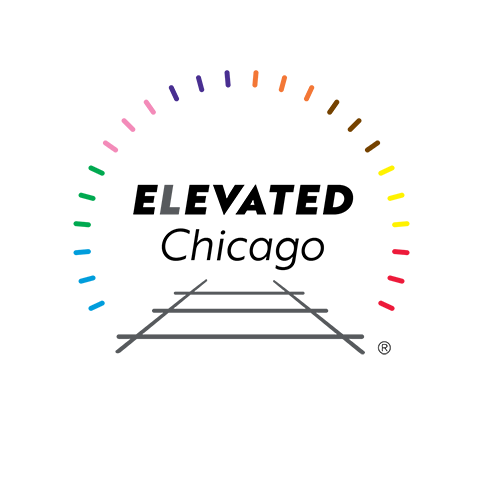Connected Communities Ordinance
The Connected Communities Ordinance was introduced to City Council by Chicago’s Mayor Lori Lightfoot on June 22, 2022. City Council voted approved the ordinance on Wednesday, July 20.
The Chicago Plan Commission unanimously approved the City’s first-ever Equitable Transit-Oriented Development (ETOD) Policy Plan in June 2021. Now it’s time for a new ordinance. Now’s the time for Connected Communities, an ordinance proposed to Chicago’s City Council.
Read about Connected Communities, the new ETOD ordinance.
Download a mini poster for your window or office. Collaboratively developed by the Elevated Chicago coalition, City departments and leaders from community and citywide organizations, the Connected Communities ordinance aims to implement the City’s ETOD Policy Plan adopted in 2021 by the Chicago Plan Commission. The ordinance leverages tools of urban planning to address historic disinvestments in Black and Brown communities and to avoid displacement triggered by gentrification.
Background: How the ordinance came to be
In 2020, the City’s ETOD Working Group – comprised of 80+ community, non-profit and City leaders, along with developers, artists, environmentalists, and organizers – developed the City’s ETOD Policy Plan to convey Chicago’s approach to equitable, healthy and sustainable development near transit hubs and corridors. The general public was invited to review and make comments on the ETOD policy recommendations in the fall of 2020. Revisions were done with support from the Office of Mayor Lori Lightfoot and a cross-section of City departments including Housing, Planning and Development, Transportation, and Public Health, with input by the Chicago Transit Authority. All materials can be found at https://chi.gov/etod.
Implementation of the ETOD Policy Plan started immediately for recommendations that City departments could move forward on their own. These included adding ETOD provisions to the Affordable Requirements Ordinance (ARO); designating 11 sites across the City as ETOD Pilots and providing them with funding and technical assistance; and committing $800M from the Dept. of Housing to advance 18 ETODs.






Insights about the Connected Communities Ordinance
Several recommendations in the ETOD Policy Plan required passage of a new ordinance (Connected Communities) to ensure that 1) equity requirements, 2) transit-orientation, and 3) development incentives were responsive to the diverse needs of residents from across the City.
A summary of the ordinance and its three key goals can be found here.
The Connected Communities Ordinance was vetted by the City of Chicago ETOD Working Group and informed by a Health Racial Equity Impact Assessment. This legislation aims to impact communities long-term by creating:
- More neighborhoods that are affordable, walkable, and transit- and pedestrian-centered (versus car-dependent).
- Healthier and safer streets and corridors.
- Neighborhoods with more housing options designed with community members to meet their specific needs.
Other members of the working group, which began developing the policy last winter, include Center for Neighborhood Technology, Access Living, Metropolitan Planning Council, Garfield Park Community Council, Endeleo Institute, Active Transportation Alliance, and Palenque LSNA (formerly known as the Logan Square Neighborhood Association). Palenque LSNA recently celebrated the opening the Lucy Gonzalez Parson Apartments, a 100%-affordable apartment community near the CTA Logan Square Blue Line station, built after years of ETOD advocacy for affordable housing in the already-gentrifying community.
“Transit-oriented development is inherently intersectional,” said Roberto Requejo, executive director of Elevated Chicago. “TOD requires good planning, thorough community engagement, commitments to affordability, accessibility and mobility, and incentives to spark economic development and community ownership. Now, we are calling for a new ordinance in Chicago that centers equity so that ETOD is a tool to help correct our city’s deep racial segregation, and to build wealth in Black and Brown communities.”
In their own words
-
“Nearly all transit-oriented development in Chicago has occurred in communities that are predominantly white, and it has often contributed to displacement in communities of color, or skipped them altogether” said Roberto Requejo, executive director of Elevated Chicago and one of the members of the ETOD Working Group. “You need only look at the differences between the activity around the Morgan station in the West Loop or the Blue Line stations along Milwaukee Avenue, on one hand, and at the vacant land around Green Line South or the 95th Street Red Line stations, on the other. The ETOD Policy Plan put equity at the center of the way Chicago develops communities around transit infrastructure. This ordinance has teeth and makes equitable TOD the norm, rather than the exception.”
-
“It’s clear that both real estate developers and building tenants appreciate the benefits of transit-served economic development and housing projects,” said Dept. of Planning and Development Commissioner Maurice Cox at the time of policy recommendations. “This effort will help ETOD become more prevalent in portions of the City where the transit resources exist, but development doesn’t.”
-
Chicago Dept. of Transportation Commissioner Gia Biagi said, “Every neighborhood in Chicago should offer its residents a walkable and transit-friendly environment that provides good access to jobs, education and recreational opportunities. This new ETOD policy creates a framework for us to move forward in partnership with community leaders – those who have the most knowledge about what their communities need – as we work to overcome the historic inequities that we are committed to correcting.”





